Is the Paris Agreement working? That’s hard to tell, because it’s hard to measure. Under the terms of the agreement, each country pledges its own commitments to control emissions, which are not binding under international law. The beauty of the non-binding approach is that countries are free to take risks in how they set their commitments. If commitments were fully binding, as they were in previous approaches — notably the Kyoto Protocol — then diplomats might simply water down the content of agreements to make sure that countries can comfortably comply, or they might refuse to sign on or withdraw altogether.
On paper, the voluntary pledges — known formally as nationally determined contributions (NDCs) — seem to be a very big deal. About 70 percent of world emissions come from countries that have made long-term pledges to cut emissions to net zero, in most cases by 2050. But bold non-binding pledges only work if they reflect true intentions and effort –— what political scientists often call credibility. Credibility is the key currency in international diplomacy whenever there is no practical way to enforce compliance, which is nearly always.
When credibility is high, then cooperation to address the problem of climate change is a bit like a rolling snowball. A growing number of countries make credible commitments, and investors follow by putting money into new technologies. Those technologies get better and cheaper, which makes further commitment easier to achieve politically. Efforts in the highly credible countries and markets then spill over into broader cooperation.
How to measure whether a country keep its climate promises
The theory is elegant, but the problem has always been measurement. How do we know whether a country’s commitment is credible? Most research on pledges made under the Paris Agreement has ducked this question, either by assuming that all the pledges are perfectly credible, or by making guesses about whether national policies and strategies are on track for a country to honor its pledge. A few studies have been tracking the efficacy of national climate policies (for example, here, here, and here) but those efforts still require a lot of crystal-balling as they peer inside national policy processes to discern how policies will be implemented and their real world impacts. New efforts to systemically assess the country-specific policies needed to meet NDCs, such as the World Bank’s Country Climate and Development Reports (CCDRs), can be a useful guide to policymakers, but do not typically comment on whether such policies will be implemented as announced.
In a new paper, just published in Nature Climate Change, a team at the University of California, San Diego and the University of Kassel in Germany took a different approach to measuring credibility. We asked some of the world’s leading policy and scientific experts what they thought about the credibility of their own country’s pledges, along with those of many other countries and regions around the world. We also asked them to evaluate the ambition of those pledges, and then stacked up their assessments alongside an array of independent expert assessments of similar questions.
The analysis points to two striking findings:
-
Countries that set ambitious goals are more likely to meet them
First, when we asked experts to rate pledges relative to what countries have the capacity to implement, we find that the boldest pledges are also the most credible. Here Europe is exceptional — both European and outside experts consider EU pledges to be highly ambitious and the most credible in the world. Yet, outside the wealthy countries that make up the Organisation for Economic Cooperation and Development (OECD), experts are optimistic about their countries’ pledges too, judging them to be both quite ambitious and equally credible.
This result is perhaps unexpected, given the common perception that emerging economies are especially reluctant to commit to ambitious action, and growing concern that financial support from rich countries, on which many developing countries’ pledges depend, may not materialize. But the responses of experts who come from those countries and know their policy processes and motivations best suggest that, in fact, their governments are beginning to see climate action not as an obligation to the international community but as a domestic political opportunity to advance economic growth and local environmental goals, such as limiting air pollution. This is an encouraging shift, but it remains challenging to persuade developing country policymakers that green investments are worth the cost over the long term.
This finding — that ambition and credibility are positively linked — stems from a new way of thinking about ambition. Many independent assessments of NDCs rate their ambition relative to what scientific assessments say countries should do to meet global temperature targets. But this approach, often called “science-based,” doesn’t give much attention to economic and political factors that limit what countries actually can do to control emissions. In our study, we ask experts to evaluate their home countries’ pledges ambition “relative to a country’s economic strength.” This approach is a political one that taps into experts’ deep knowledge and experience with their home countries’ political processes and unique economic circumstances by asking them to evaluate their promises based on what is possible practically. (Indeed, the paper is part of a long overdue effort by political scientists to get more centrally involved in studying one of the world’s most important global problems.)
Our results reveal both good news and bad news for the outlook on Paris and climate change mitigation. The good news is that the link between ambition and credibility debunks a commonly-raised fear about non-binding approaches and credibility: that without formal enforcement, governments would set very ambitious goals they have no intention of meeting. When we use the political approach to measuring ambition, we find no support for this.
The bad news is that not all countries are taking the opportunity to pledge up to their potential and follow through with action. Our study indicates that OECD countries outside of Europe — and the United States in particular — are not doing their part, and policymakers know it.
For a long time it has been easy to predict, based on the political forces at work (see here and here), that the world would underinvest in efforts to control emissions. That logic still applies; at present, the world is on track for warming of about 3⁰C above pre-industrial levels. That’s better than the worst-case projections of a decade ago, but it’s still a lot of warming.
-
Stable politics and solid institutions make a country more likely to meet climate goals
Our second key finding is that the biggest factors separating credible countries from less credible ones are political and institutional. For a long time, most thinking about what motivates countries to cut emissions hinged on the economic position of the country, including its exposure to the adverse impacts of climate change. For example, developing countries or those that depend on income from fossil fuel production should be less motivated to set and meet ambitious goals, while countries that stand to bear the worst physical damages from warming, such as India, would be more motivated to act. In fact, our results don’t support these explanations: The paper includes statistical tests that probe how much these kinds of variables explain ambition and credibility, and finds they aren’t significant.
What we do find is the importance of the quality of government institutions to explain credibility. Higher quality institutions — those that create stable policy environments over the long term — lead to more credible pledges. (This result is familiar to scholars who have studied investment behavior. When investment projects require massive amounts of capital, as is true for most efforts to cut emissions, there is a premium in markets that can send reliable long-term signals so that capital can be gradually paid off over many years at low risk.)
Our approach of asking elite officials — government officials and scientists — their views, has a lot to offer. Assessing credibility is one of those topics that often requires a lot of expert judgement by people who were “in the room” when the key policy decisions were made and have intuition that is much better than the average non-expert about how to assess the totality of highly complex policy processes and uncertain futures for technology and political attitudes. Put differently, these kinds of senior decisionmakers have a crystal ball that isn’t perfect, but is a lot less cloudy than everyone else’s prognostication methods. Obviously, elites are flawed, often overconfident, and might also have incentives to overstate the credibility of their own country’s actions — biases we limited as much as possible with strict promises of anonymity and some other methods. Nonetheless, our findings around European exceptionalism and the importance of institutions in explaining policy credibility remain highly robust, even when we poked at them using a variety of statistical techniques.
This study is part of a body of research suggesting that successful international cooperation on climate depends not only on setting targets and timetables, but even more on the actions and institutions that make efforts inside a country credible to the rest of the world. That’s true not just for national governments, who are participants in diplomatic processes, but for companies and subnational governments, as more of them start making bold emissions pledges.
Why it’s hard to measure a country’s efforts to meet climate goals
Credibility can be difficult to gauge from the outside. When countries and firms make good faith attempts to cut emissions that ultimately don’t work out, the failures can look like dithering, especially if we look only at numerical emissions results. But such attempts are essential for pushing the frontier of what is possible. Even when they fail, which is inevitable because experimentation is risky, they are extremely revealing. It is vitally important to recognize, reward, and learn from these experiments, especially in sectors where climate solutions are the most uncertain, like aviation, shipping, and heavy industry. If analysts’ measuring sticks for credibility are straight and rigid, we risk labeling productive failures as willful non-compliance and undermining the very efforts we should encourage.
Shifting the dialogue to credibility won’t be easy, precisely because it is so hard to measure. Studies like this one show one way to help improve measurement, but it is also important to advance other methods, including very detailed analyses of NDCs. The Paris Agreement established formal machinery for such assessments, but it is unlikely to have much of an impact because it was designed through consensus diplomacy, which is nearly always a recipe for the lowest common denominator of what is agreeable to all. Policy review processes outside the United Nations Framework Convention on Climate Change (akin to the International Monetary Fund’s Article IV policy reviews, in which a team of economists visits a country to examine how they do things) are encouraging models. Yet, these have proved hard to implement within international organizations where decisions often are driven by consensus and designed to avoid putting inconvenient spotlights on countries.
Still another strategy might be for countries to form clubs or coalitions: small groups of motivated governments and firms that agree to review each other’s pledges and policies in depth, not just to evaluate their adequacy and credibility, but also to learn from one another about what works and what doesn’t. Such small groups are already popping up in regions and industries around the world and were on extensive display last fall in Glasgow. Among others, the United States’ First Movers Coalition is an example.
The primacy of institutions in explaining variations in credibility has some big policy implications. One of those implications is that as governments and firms set up small groups of first movers, the kinds of national policy institutions they have in place should play a big role in determining who should be allowed membership in the club. National institutions that are administratively robust and stable, allowing policies to be implemented once decided, are key. Another big implication is that capacity-building programs that help countries build better institutions are vitally important. While there is a lot of money flowing around climate change, only a modest fraction is really going to effective capacity building. When you look at other areas of successful international cooperation, such as the Montreal Protocol, the 1987 treaty which helped phase out chemicals damaging the ozone layer, a big part of success in achieving global engagement has hinged on investing in the institutions that help countries make their policies credible.
For decades, climate cooperation has been marked by a lot of diplomacy but not much real action because pledges were either non-existent, not particularly ambitious, or disingenuous. That is now changing, and possibly quickly. With the right methods and theories, a rich research agenda is unfolding as we seek to understand the variation in pledges and, through policy processes, shape national action towards better global outcomes.
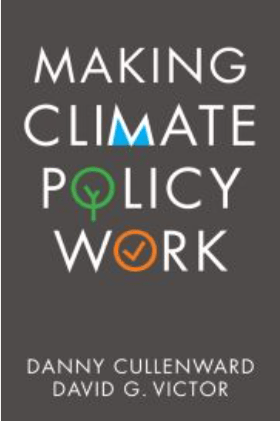
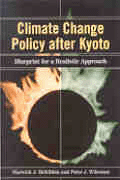


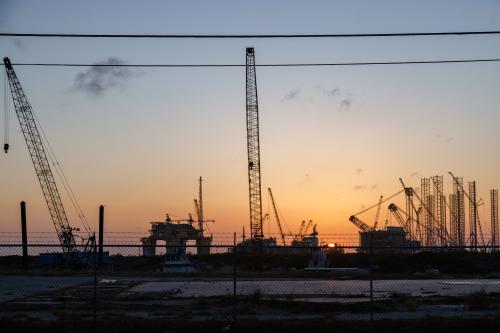
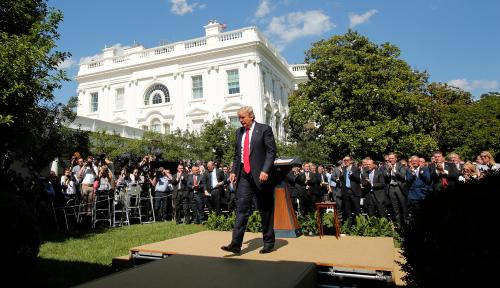



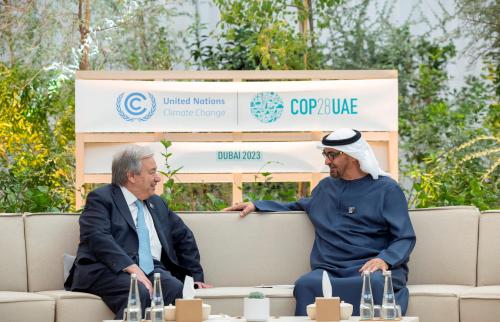
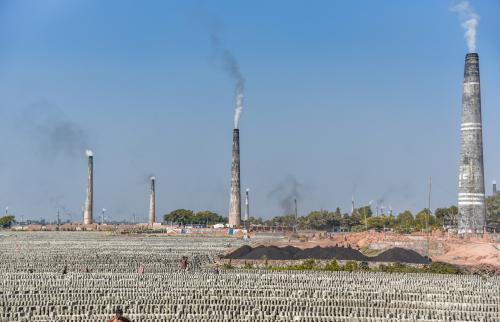
Commentary
Success of the Paris Agreement hinges on the credibility of national climate goals
September 30, 2022